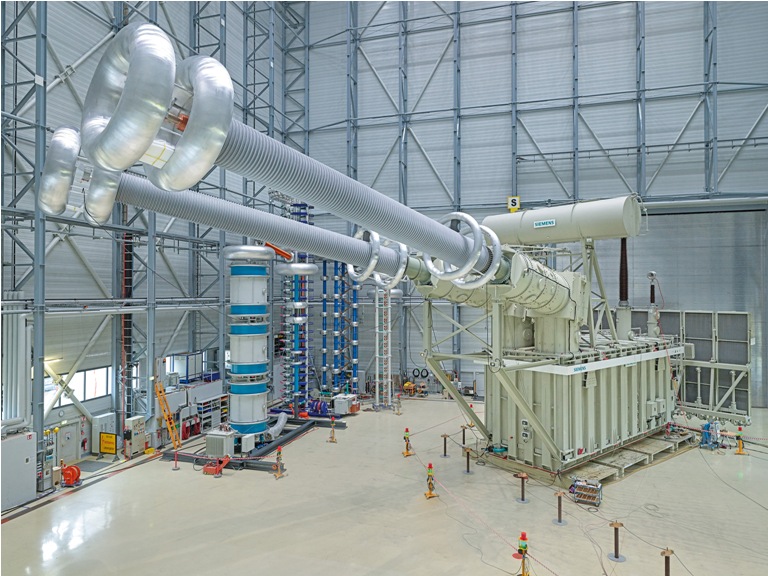‘Choice of transmission technology depends on system restoration philosophy’
- December 10, 2020

The Maharashtra government recently approved a plan to construct an 80-km underground HVDC link to augment power supply to Mumbai. This was done with a view to forestalling events like the major grid failure of October 12, 2020, that severely affected Mumbai and neighbouring areas. T&D India got in touch with Hauke Jürgensen, Head of Large Transmission Solutions at Siemens Energy, to understand some underlying technical issues.
The state government, it is learnt, opted for HVDC technology as it would be helpful in the event of “black start”. Understanding “black start” and the significance of HVDC was the essence of T&D India’s brief interaction with Hauke Jürgensen, which is presented here:
T&D India: What does “black start” mean, in simple terms?
Hauke Jürgensen: Regarding system restoration, two processes need to be distinguished, as there are Black Start and System Restoration Ancillary Systems (SRAS).
From the CENELEC standard TS 50654-1, 2020, we can take the following definitions:
- Black Start is the energization of an alternating current/direct current (AC/DC) converter station from another remote or asynchronous, operational AC system via a DC connection
- SRAS is the energization of the black or islanded, connected AC system or parts thereof
Siemens Energy’s HVDC PLUS systems can be designed to provide Black Start and SRAS. The design requirements should be specified based on a generic AC network with project specific parameterized components representing all relevant scenarios of the AC systems (both the feeding one and the one to be restored).
T&D India: Is HVDC technology better than conventional EHV AC technology when it comes to situations of “black start”?
Hauke Jürgensen: In general, whether HVDC PLUS or EHV AC technology is the preferred solution depends on the network conditions and the system restoration philosophy.
SRAS are necessary, when an AC system has fallen into the Black Out state. All generation in the corresponding “black” AC system has tripped or is out of service. Possible scenarios for such situation can be:
- an islanded AC system has lost all generation
- part of an integrated AC system has become separated from the rest of the AC system and thus has become islanded with the situation of generation loss
Any operational AC system available in the vicinity can be used to restore the black AC system. Similarly, existing generators with appropriate capability inside the black AC system can be used. Voltage Sourced Converter (VSC) based HVDC stations, like HVDC PLUS converter stations can lead or support the restoration process depending on the AC system restoration concept. As a pre-condition, the HVDC system would need at least one other converter station in the same DC circuit being connected to a strong power source, e.g. an operational AC system. This AC system typically would have a Short Circuit Ratio of 2 or higher (SCR>=2). SCR means the ratio between Short Circuit Power and Nominal Power of the DC system.
Project Background
In November 2020, the Maharashtra state government sanctioned a plan to build an underground transmission link connecting the 400kV Kudus substation of Maharashtra State Electricity Transmission Company Ltd (MSETCL) to the 220kV Aarey substation of Adani Electricity Mumbai Ltd (AEML). The link would be based on high voltage direct current (HVDC) technology and would involve an estimated investment of Rs.8,000 crore.
The HVDC link, with an estimated transmission capacity of 1,000 mw, will be developed by AEML and is envisaged for completion within three years.
AEML is engaged in the integrated business of power generation, transmission and retail electricity distribution. AEML serves over 3 million consumers spread across 400 sqkm. in Mumbai and its suburbs meeting close to 2,000 mw of power demand.
According to reports, the Maharashtra government opted for HVDC technology as it is modular in design, requires less footprint compared to conventional AC (alternating current) technology and has a unique feature of “Black Start”, which ensures faster restoration of power supply in the event of widespread grid disturbances.
The grid outage of October 12
The grid failure in the morning of October 12, 2020, resulted in a massive power outage in Mumbai city and neighbouring areas, bringing the city to a halt. Power was restored to essential services in two hours, following which there was progressive restoration of power in pockets.
According to a statement issued by Tata Power, on October 16, 2020, the power failure was due to cascade tripping at substations and transmission lines of MSETCL.
Here is a summary of the chain of events leading to the grid failure:
- There are four incoming lines to MSTECL’s Kalwa receiving stations for further transmission of power to Mumbai. Out of these four lines, one line (400kV Pune-Kalwa) was under forced shutdown since October 10, 2020.
- In the early morning (6:54 am) of October 12, 2020, MSETCL undertook emergency shutdown of the second line (400kV Kalwa-Padghe 1) to attend to its fault. This line was expected to be revived at 9:30 am but it wasn’t.
- With two lines out of service, the third line (400kV Kalwa-Padghe 2) carrying 644 mw of power to Mumbai city tripped due to conductor snapping at 9:58 am.
- With three lines out of service, the fourth line (400kV Pune-Khargar) also trips due to overloading in the system, at 10:05am.
- Mumbai’s islanding system that saves the city from major power outages was successfully separated at 9.58 am, however it could not hold sudden the 1,000 mw load drop at 10:05 am.
Featured photograph (source: Siemens) showing a 1,100kV HVDC transformer is for illustration only


